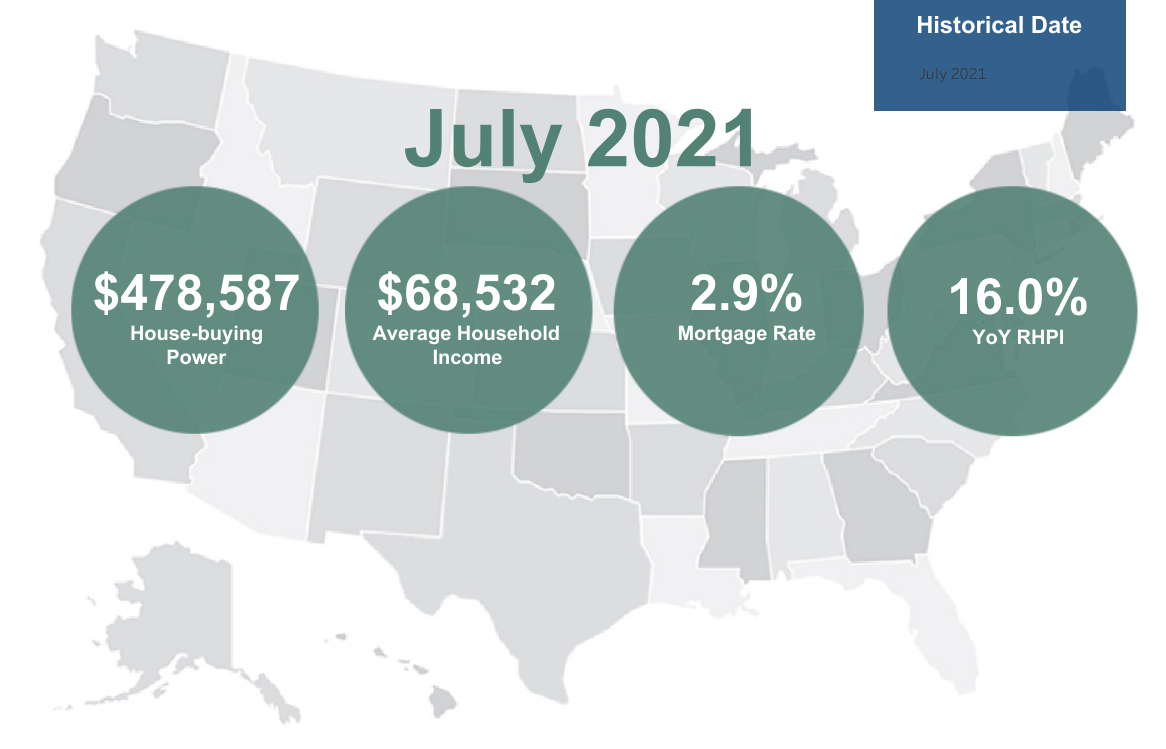 First American Financial [1] has released the results of its July 2021 First American Real House Price Index (RHPI) [2] which found that housing affordability continued its decline, as year-over-year nominal house price appreciation reached a record 20%, outpacing the increase in house-buying power compared to just one year ago.
First American Financial [1] has released the results of its July 2021 First American Real House Price Index (RHPI) [2] which found that housing affordability continued its decline, as year-over-year nominal house price appreciation reached a record 20%, outpacing the increase in house-buying power compared to just one year ago.
The RHPI measures the price changes of single-family properties throughout the U.S., adjusted for the impact of income and interest rate changes on consumer house-buying power over time at national, state, and metropolitan area levels. Because the RHPI adjusts for house-buying power, it also serves as a measure of housing affordability.
The July RHPI found that:
- Real house prices increased 0.2% between June 2021 and July 2021.
- Real house prices increased 16.0% between July 2020 and July 2021.
- Consumer house-buying power, how much one can buy based on changes in income and interest rates, decreased 1.63% between June 2021 and July 2021, and increased 3.8% year-over-year.
- Median household income has increased 1.9% since July 2020, and 64.9% since January 20001.
- Real house prices are 11.4% less expensive than in January 2000.
- While unadjusted house prices are now 34.9% above the housing boom peak in 2006, real, house-buying power-adjusted house prices remain 37.8% below their 2006 housing boom peak.
“House-buying power, how much one can buy based on changes in income and interest rates, increased by 3.8% in July compared with one year ago, propelled by lower mortgage rates and higher household income,” said Mark Fleming [3], Chief Economist at First American. “However, while affordability declined again in July, it’s helpful to put affordability in historical context. Nationally, nominal house prices in July were 35% higher than at the housing boom peak for prices in 2006, yet real, house-buying power-adjusted house prices remain nearly 38% below their 2006 housing boom peak. But real estate is local, and the recovery from the housing boom and crash varies by market, so where has affordability improved the most compared with the prior peak?”

The top five markets where affordability has improved the most since their prior peak include:
- Baltimore (58% from peak)
- Washington (57% from peak)
- Chicago (56% from peak)
- Miami (56% from peak)
- Riverside, Calif. (54% from peak)
On the other end of the curve, the top five markets where affordability has improved the least since their prior peak include:
- Nashville, Tennessee (13% from peak)
- Buffalo, New York (13% from peak)
- Kansas City, Missouri (19% from peak)
- Denver, Colorado (20% from peak)
- Salt Lake City, Utah (24% from peak)
“For nominal house prices, all 50 markets we track have surpassed their previous housing peaks, but some markets have only done so recently,” said Fleming. “For example, Chicago (2%), Baltimore (3%), Washington (4%), Virginia Beach, Va. (8%), and Hartford, Connecticut (9%) have only modestly surpassed their previous nominal price peaks. The remaining 45 markets have surpassed their peaks by at least 10%.”
Click here [2] for more on First American’s July 2021 RHPI.